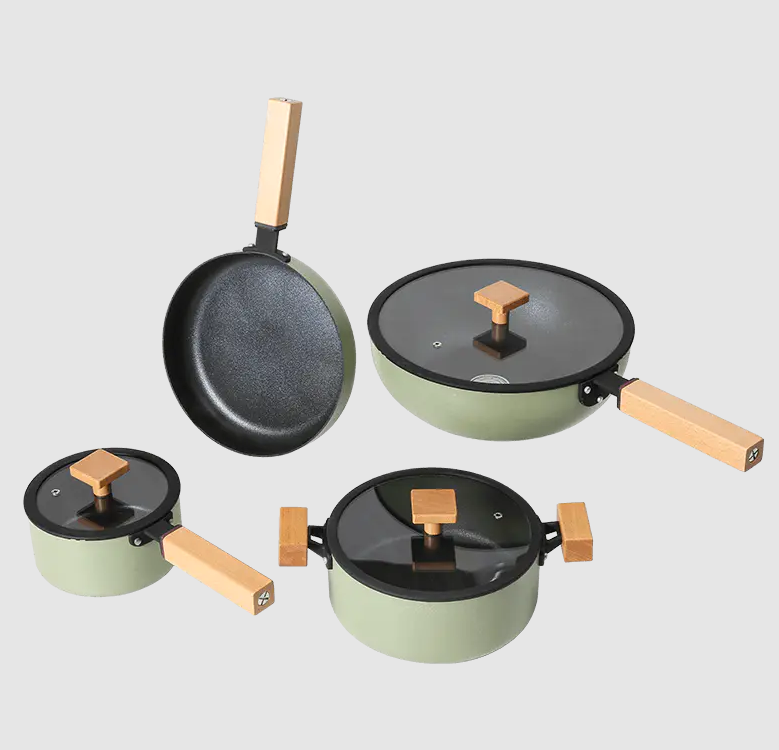Pressed Cookware Performance: An In-Depth Look at Thermal Consistency and Heat Resistance

Pressed cookware, with its precision engineering and sleek design, has become a staple in many kitchens around the world. As consumers gravitate towards cookware that not only performs well but also stands the test of time, the thermal stability and heat resistance of pressed cookware become paramount factors to consider. This article will explore the intricacies of how these properties contribute to the overall performance and longevity of pressed cookware in various cooking environments.
The thermal stability of pressed cookware is a measure of how well it can maintain a consistent temperature under heat without warping or losing its shape. This characteristic is crucial for even cooking and is particularly important for dishes that require slow and steady heat application. Pressed cookware, known for its uniform thickness and precision manufacturing process, tends to have excellent thermal stability. This uniformity allows for a steady heat distribution across the entire cooking surface, ensuring that food is cooked evenly without hot spots or cold spots. This is in stark contrast to uneven heating that can occur with cookware of inconsistent thickness or poor construction.
Heat resistance is another critical factor when evaluating pressed cookware. This property refers to the cookware's ability to withstand high temperatures without deforming or releasing harmful substances. High-quality pressed cookware is typically made from materials that have high melting points and can endure the rigors of high-heat cooking methods, such as searing, frying, and baking. The materials used in pressed cookware, such as stainless steel, aluminum, or cast iron, are chosen for their heat resistance properties, ensuring that the cookware remains safe and functional even under extreme heat.
The combination of thermal stability and heat resistance in pressed cookware also contributes to energy efficiency in the kitchen. Cookware that can maintain a consistent temperature with less fluctuation requires less energy to maintain that temperature, which is not only cost-effective but also environmentally friendly. Moreover, the durability of pressed cookware means that it can withstand the wear and tear of daily use, reducing the need for frequent replacements and the associated waste.
However, it is essential to note that not all pressed cookware is created equal. The quality of materials, the manufacturing process, and the design of the cookware can all impact their thermal stability and heat resistance. For instance, some pressed cookware may have a thinner base, which could lead to uneven heating or warping over time. Additionally, the presence of certain coatings or finishes can affect the cookware's ability to withstand high temperatures without degrading.
In conclusion, the thermal stability and heat resistance of pressed cookware are critical factors that contribute to its performance in the kitchen. High-quality pressed cookware, with its uniform construction and choice of heat-resistant materials, offers even heat distribution, durability, and energy efficiency. As consumers become more discerning about their cookware choices, understanding these properties can help guide them towards the pressed cookware that best meets their cooking needs and environmental concerns.
Aluminum body with nonstick coating for easy cooking and cleaning; BPA-free
Beechwood handles stay cool during use, vented glass lids let steam escape, and silicone lids keep your pan always new.
induction bottom heats evenly; compatible with gas, electric, and glass stovetops induction
Hand wash only, not dishwasher safe; please check the size of your stovetop's hobs before purchasing
Please use low to medium heat; extremely high temperatures can cause handle and coating damage
- Art
- Causes
- Crafts
- Dance
- Drinks
- Film
- Fitness
- Food
- Jeux
- Gardening
- Health
- Domicile
- Literature
- Music
- Networking
- Autre
- Party
- Religion
- Shopping
- Sports
- Theater
- Wellness


